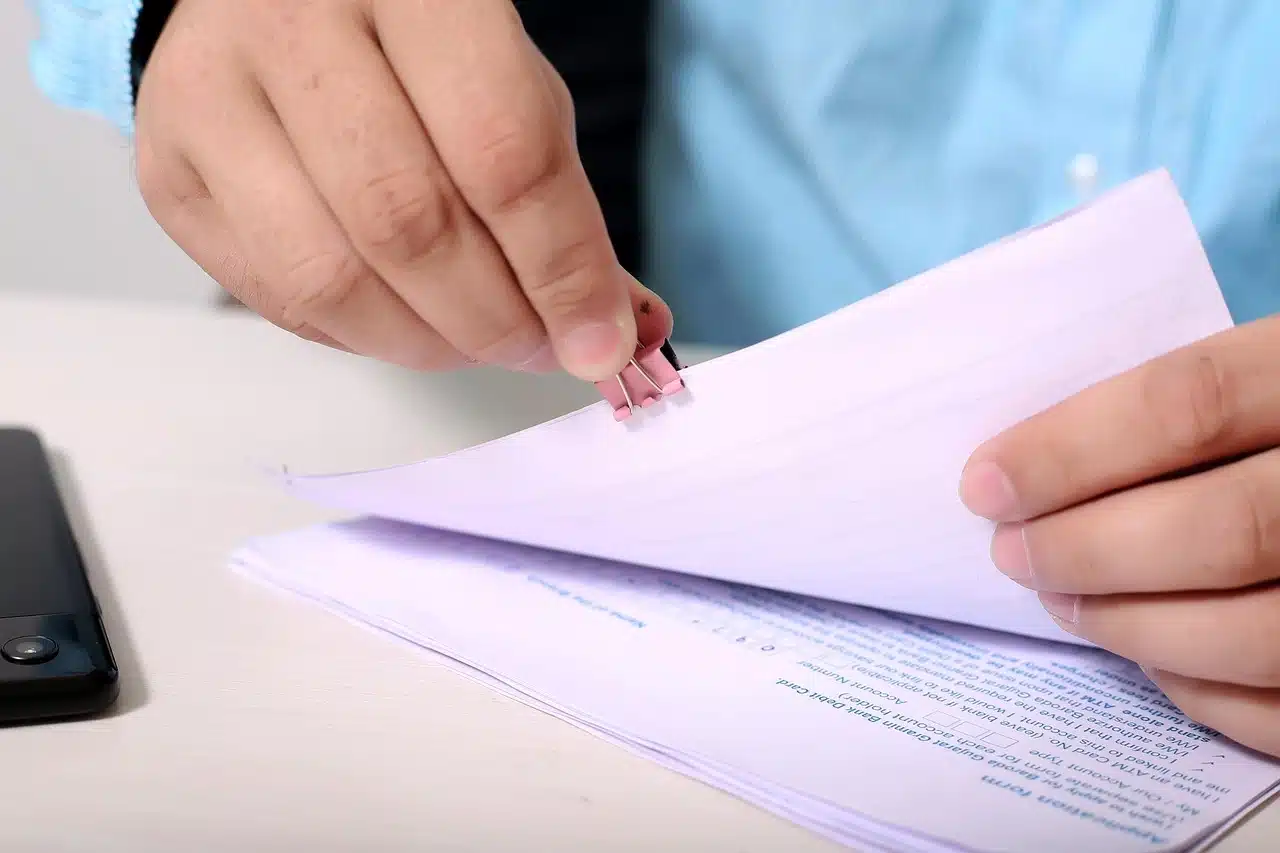Simple Money-Saving Tips for Beginners: Your Easy Guide to Start Saving

Starting to save money can feel overwhelming—especially if you’re living paycheck to paycheck, managing debt, or just beginning to take control of your finances. For many beginners, the hardest part is knowing where to start. Questions like “How much should I save?” or “What if I don’t have anything left over?” are common, and the fear of doing it “wrong” can be enough to stall progress entirely.
But the truth is, saving money doesn’t require a big income or drastic lifestyle changes. It begins with small, simple steps—like setting aside just a few dollars a week or tracking one area of spending. These small wins build confidence and, over time, a solid financial foundation.
In this guide, you’ll find easy, beginner-friendly money-saving tips that are practical and actionable. Whether you’re trying to build an emergency fund, reduce daily spending, or simply create better financial habits, these steps are designed to help you move forward—one smart decision at a time.
Key Takeaways
- Recognize the importance of budgeting to control your spending.
- Set clear financial goals to guide your saving efforts.
- Utilize practical savings tips to cut unnecessary expenses.
- Stay committed to your budget for long-term financial success.
- Understand that starting to save money, no matter how small, can lead to significant benefits.
Why Saving Money Is Important for Beginners
Learning to save is key to building a secure financial future. For beginners, developing a solid savings habit is the first step toward financial independence. It helps prepare for unexpected costs, reduces stress, and creates a foundation for long-term goals like education, travel, or homeownership.
Starting early not only increases your ability to handle emergencies but also opens doors to investment opportunities and wealth building. It can significantly improve your quality of life over time.
A growing number of households recognize this importance. According to the Federal Reserve’s 2022 Survey of Consumer Finances, 98.6% of U.S. families held some type of transaction account—including savings accounts—highlighting a nationwide shift toward better financial preparedness and planning.¹
For those just beginning, learning how to save money—such as by automating deposits, trimming daily expenses, or setting visual financial goals—can reduce stress and help build confidence around money decisions.
How to Start Saving Money with Zero Experience
Embarking on your financial journey can feel overwhelming, but taking the first step is crucial. Begin by understanding your current financial situation—track your income and expenses meticulously. Utilize tools like spreadsheets or budgeting apps to simplify this process.
Once you have a clear picture of your finances, create a budget that includes a dedicated savings section. Even setting aside a small portion of your income can accumulate significantly over time. These foundational steps are powerful in building your financial stability.
Here’s a straightforward approach to kickstart your savings:
- Identify all income sources.
- Categorize monthly expenses (e.g., housing, transportation, groceries).
- Pinpoint areas to reduce spending without compromising your quality of life.
- Set a realistic savings goal and allocate funds toward it monthly.
- Regularly review and adjust your budget to stay aligned with your financial objectives.
Adopting these practices not only fosters financial wellness but also aligns you with a growing number of individuals who prioritize budgeting. According to the National Foundation for Credit Counseling’s 2021 survey, 42% of U.S. adults have a budget and closely monitor their spending, reflecting a positive shift toward financial preparedness. By following these steps, you’re laying the groundwork for a secure financial future.
Simple Budgeting Tips for Beginners to Track Spending
Budgeting is one of the most effective tools for gaining control over your finances—especially when you’re just starting out. The first step is understanding the balance between what you earn and what you spend. By tracking your income and expenses, you begin to see where your money actually goes each month.
A helpful method for beginners is the 50/30/20 rule, which breaks down your after-tax income into three simple categories:
- 50% for needs like rent, groceries, utilities, and transportation
- 30% for wants like dining out, entertainment, and hobbies
- 20% for savings, such as building an emergency fund, investing, or preparing for retirement
This method is popular for good reason. According to the United Nations Federal Credit Union, the 50/30/20 rule provides a clear, balanced framework that makes budgeting easier to stick to—especially for those new to personal finance.
But creating a budget isn’t a one-time task—it’s an ongoing process. Once your budget is in place, make it a habit to review and update it regularly. This helps you spot unexpected expenses early and adjust your spending before it gets off track. Over time, these small check-ins lead to smarter decisions and more consistent savings.
Here’s a quick reference to guide your budgeting structure:
| Expense Type | Percentage of Income | Example Items |
| Needs | 50% | Rent, groceries, utilities, transportation |
| Wants | 30% | Dining out, entertainment, hobbies |
| Savings | 20% | Emergency fund, retirement, investments |
Best Ways to Cut Daily Expenses Without Sacrificing Comfort
Reducing your daily spending doesn’t mean giving up the things you enjoy. With a few smart adjustments, you can trim costs while still living comfortably. Here are some effective strategies:
1. Make Coffee at Home
Instead of spending $4–$5 on daily takeout coffee, invest in quality beans or pods and brew at home. You’ll save hundreds per year without giving up your morning ritual.
2. Meal Plan and Cook in Batches
Planning your meals for the week reduces food waste and avoids impulse takeout. Cooking in bulk also saves time and energy—reheat and enjoy later without extra effort.
3. Use Public Transportation or Carpool
Even a few days of skipping a solo drive can save significantly on gas, tolls, and parking. If you work remotely part-time, this makes even more sense.
4. Cancel Unused Subscriptions
Review your streaming, app, or gym subscriptions. Cancel anything you don’t use at least weekly. Often, one or two forgotten services are quietly draining your budget.
5. Switch to Generic Brands
For many household or grocery items, generic brands offer the same quality at a fraction of the price. Try swapping just 2–3 staples—you might not even notice the difference.
6. Use Cashback and Rewards Apps
Apps like Rakuten, Honey, or your credit card’s cashback program can reward you for purchases you already make. Just be sure not to spend more just to earn rewards.
7. Lower Utility Costs
Turn off lights when not in use, unplug electronics, and switch to LED bulbs. These small habits can reduce your monthly energy bill without changing your lifestyle.
8. Buy in Bulk (Selectively)
Staples like rice, pasta, cleaning supplies, or toiletries are often cheaper in bulk. Just make sure you’ll use them before expiration to avoid waste.
9. Practice the 24-Hour Rule
Before making non-essential purchases, wait 24 hours. Often, the urge to buy fades, helping you avoid unnecessary spending without feeling deprived.
10. Set Spending Limits for “Fun” Categories
Enjoy dining out, hobbies, or entertainment—but assign a monthly limit. This lets you indulge without letting costs spiral out of control.
These tips allow you to live well without overspending. A few thoughtful changes to your daily routine can keep your finances healthy—without feeling like you’re giving anything up.
Tools and Apps to Make Saving Money Easier
Saving money doesn’t have to be difficult—especially with the right tools at your fingertips. Today’s budgeting and financial apps make it easier than ever to track spending, build savings habits, and stay in control of your money.
Budgeting apps are especially helpful for beginners. They simplify the process of managing your income and expenses with user-friendly dashboards, alerts, and visualizations. Whether you want to track daily spending or set long-term savings goals, these tools help you stay accountable.
In fact, the adoption of these tools is steadily rising. According to a 2022 survey by the Financial Technology Association, 61% of Americans use fintech apps like budgeting and savings tools to manage their finances and navigate economic uncertainty. This growing trend highlights how effective digital tools have become in helping people build financial stability.
High-yield savings accounts are another great option. They typically offer better interest rates than standard savings accounts, allowing your money to grow faster. Many of these accounts also offer automatic transfer features, helping you build savings consistently without having to think about it.
Here are a few ways to use savings tools and apps effectively:
- Look into different money-saving apps to track your daily spending and set financial goals.
- Use budget apps to keep an eye on your spending habits.
- Set up automatic transfers to your high-yield savings account.
- Check out features in these apps that let you categorize your spending. This makes it easier to find ways to save.
By using these tools, you can make saving easier and build a solid financial base. Each tool is a step towards achieving financial stability.
Common Mistakes Beginners Make When Trying to Save
Starting to save is exciting, but it comes with its own set of challenges. Many beginners face common pitfalls that can slow down their progress. These mistakes can lead to frustrating financial setbacks.
- No clear goal: Saving aimlessly makes it harder to stay motivated or track progress.
- Saving last, not first: Waiting until the end of the month often means nothing gets saved.
- Setting unrealistic targets: Overly ambitious goals can lead to burnout or giving up.
- Overcomplicating budgeting: Using too many tools or methods can become overwhelming.
- Ignoring small daily expenses: Little purchases add up and quietly drain your budget.
- Skipping an emergency fund: Without a safety net, unexpected costs can derail your savings.
- Not automating savings: Relying on willpower instead of automation leads to inconsistency.
- Comparing with others: Measuring your progress against others can be demotivating.
By knowing and avoiding these common mistakes, you can save more effectively. Understanding these pitfalls is the first step to building a strong financial future.
Conclusion
Saving money doesn’t require major sacrifices or complex strategies. It starts with small, consistent steps—like tracking expenses, setting achievable goals, and building simple habits that stick. Over time, these efforts lead to greater financial stability and peace of mind.
If you’re looking for a practical way to boost your savings, Focus Group Panel can help. By joining, you’ll gain access to legitimate paid research studies that fit your schedule—providing extra income you can put directly toward your savings goals. It’s an easy, flexible way to turn your time into progress.
Start saving smarter—sign up with Focus Group Panel today.
FAQ
What are some effective ways to save money?
There are numerous ways to save money, starting with creating a realistic budget. By tracking your income and expenses, you can identify areas where you might overspend.
How can I start saving money effectively?
To start saving money, begin by setting specific savings goals. Determine how much you want to save and by when. Utilize a calculator to estimate how much you need to set aside each month to reach your goal to save. Next, create a monthly budget that includes your savings as a fixed expense, just like rent or utilities. This will help you prioritize saving and hold yourself accountable.
What is the best way to save money each month?
The best way to save money each month is to automate your savings. Set up an automatic transfer to your savings account right after you receive your paycheck. This “pay yourself first” approach ensures that you prioritize savings before you can spend that money.
What are some simple steps to create a budget?
Creating a budget involves a few simple steps: First, list all your income sources and total them up. Next, categorize your expenses into fixed and variable costs. Track your spending for a month to get an accurate picture of where your money goes.





